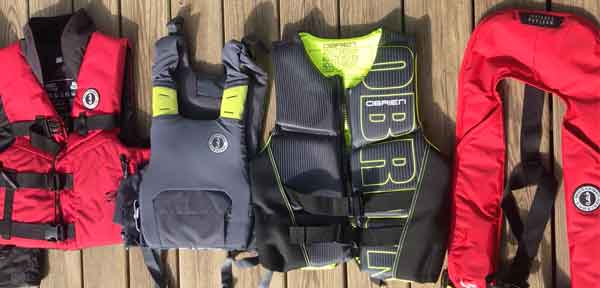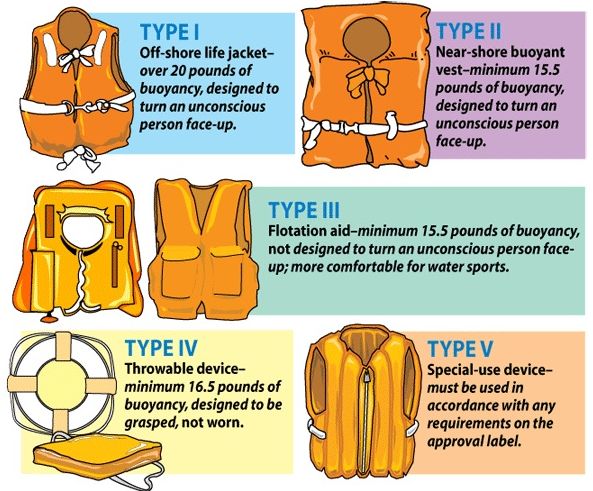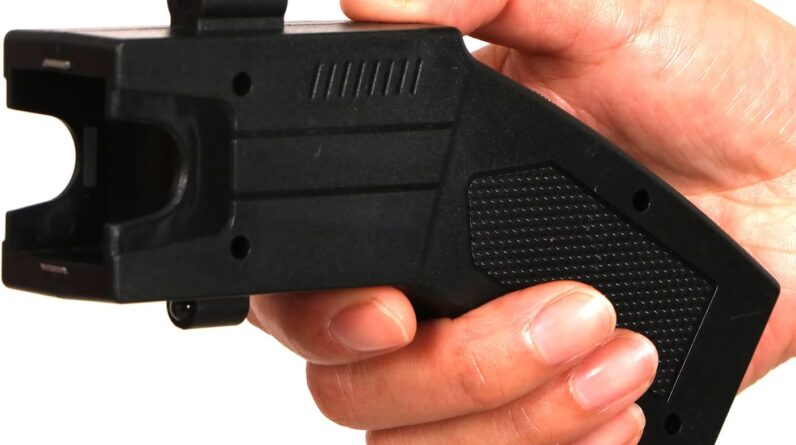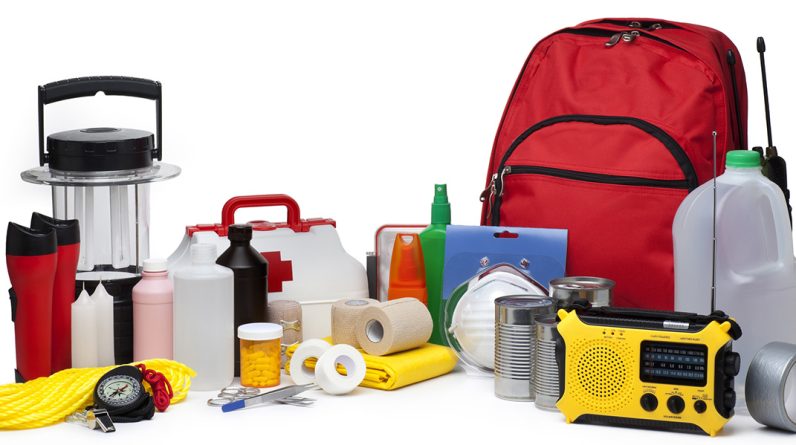
If you’ve ever wondered about the key differences between traditional life jackets and inflatable ones, look no further. In this article, we’ll explore the contrasting features and benefits of these two types of life jackets. So whether you’re setting off on a leisurely boat trip or planning an adventurous water activity, understanding the distinction between a traditional life jacket and an inflatable one will help you make an informed decision and ensure your safety on the water.

This image is property of www.westernbass.com.
Traditional Life Jacket
Design and structure
Traditional life jackets are known for their tried and true design and structure. They typically feature a bright-colored outer shell made of durable nylon or polyester material for high visibility in the water. The design includes multiple foam panels strategically placed to provide optimal buoyancy and support. These jackets often have adjustable straps and buckles to ensure a secure fit for a wide range of body types.
Materials and buoyancy
The materials used in traditional life jackets are typically foam-based, such as PVC foam or closed-cell foam. These foam materials provide excellent buoyancy, ensuring that the wearer remains afloat in the water. The foam panels are strategically placed to distribute the buoyancy evenly, keeping the wearer’s head above the water surface and allowing for easy breathing.
Fit and comfort
Traditional life jackets are designed to provide a snug and secure fit. The adjustable straps and buckles allow the wearer to customize the fit according to their body shape and size. These jackets are available in various sizes, ensuring that there is an option for people of all ages and body types. The foam panels are contoured to the body, providing comfort and preventing the jacket from dangling around while in the water.
Ease of use
One of the advantages of traditional life jackets is their simplicity and ease of use. You can simply slip on the jacket, buckle it up, and you’re ready to go. There are no additional steps or mechanisms that need to be operated. This straightforward design makes traditional life jackets suitable for individuals of all ages and skill levels.
Convenience and mobility
While traditional life jackets provide excellent safety and buoyancy, they can be bulkier and more restrictive in terms of movement. The foam panels and the design of the jacket can inhibit full mobility in the water. However, modern designs have improved the mobility factor, and many traditional life jackets now feature segmented foam panels that allow for more flexibility and range of motion.
Inflatable Life Jacket
Design and structure
Inflatable life jackets are a newer addition to the market and have gained popularity due to their compact and lightweight design. Unlike traditional life jackets, which rely solely on foam for buoyancy, inflatable life jackets have a more streamlined and minimalist design. They feature an outer shell made of durable fabric, and the buoyancy is provided by one or more inflatable chambers.
Inflation mechanism
The inflation mechanism is one of the key features that sets inflatable life jackets apart. These jackets typically come with either manual inflation or automatic inflation options. Manual inflation requires the wearer to manually pull a cord or trigger to activate the CO2 cartridge, which inflates the chambers. Automatic inflation, on the other hand, utilizes a hydrostatic valve that automatically activates upon contact with water, rapidly inflating the jacket.
Materials and buoyancy
The materials used in inflatable life jackets are often lightweight yet durable, such as nylon or neoprene. The buoyancy is provided by the inflated chambers, which can be made of high-quality materials like polyurethane or PVC. Inflatable life jackets are designed to provide sufficient buoyancy to keep the wearer afloat in the water, with some models offering higher buoyancy ratings than traditional life jackets.
Fit and comfort
Inflatable life jackets are typically designed to be adjustable, allowing the wearer to customize the fit. They often have adjustable straps and buckles similar to traditional life jackets. The lightweight and streamlined design of inflatable life jackets offer greater comfort and freedom of movement compared to their bulkier counterparts. This makes them particularly appealing for activities such as boating, fishing, and kayaking.
Ease of use
Inflatable life jackets are designed with convenience in mind. While they require a few additional steps for proper operation, such as checking for the presence of a CO2 cartridge or ensuring the hydrostatic valve is in working condition, the overall process is fairly simple. Inflatable life jackets usually come with clear instructions and markings to guide the wearer on how to properly inflate, deflate, and re-arm the jacket after use.
Convenience and mobility
One of the major advantages of inflatable life jackets is their compact and portable nature. When deflated, they can be easily folded or rolled into a compact size, making them convenient to store or carry. This portability is especially beneficial for individuals participating in water sports or activities that require full mobility, as inflatable life jackets do not restrict movement to the same extent as traditional life jackets.
This image is property of www.oregon.gov.
Comparison of Traditional and Inflatable Life Jackets
Safety
Both traditional and inflatable life jackets are designed with safety as the top priority. Both types of jackets are approved by appropriate maritime safety organizations and undergo rigorous testing to ensure their effectiveness in water rescue situations. However, it is crucial to consider the intended use and environment when choosing between the two. Traditional life jackets are often recommended for activities such as sailing or rough water conditions, where the added buoyancy and durability of foam-based jackets are advantageous. Inflatable life jackets, on the other hand, may be more suitable for calmer waters or activities where mobility is highly desirable.
Buoyancy and flotation
Traditional life jackets, with their foam panels, provide reliable and consistent buoyancy regardless of external factors such as inflation or deflation. They are known for their ability to keep the wearer afloat even without the need for manual intervention. In contrast, inflatable life jackets rely on the inflation of chambers to provide buoyancy. While they may offer comparable levels of buoyancy when fully inflated, factors such as proper maintenance, including checking the presence and functionality of CO2 cartridges, are essential to ensure the flotation capability of inflatable life jackets.
Comfort and mobility
When it comes to comfort and mobility, inflatable life jackets often have the upper hand. The lightweight and streamlined design of inflatable jackets allow for greater freedom of movement, making them ideal for activities such as swimming or paddleboarding. Traditional life jackets, while providing excellent safety and buoyancy, may be bulkier and restrict movement to some extent. However, advancements in design have improved the mobility factor of traditional life jackets, with segmented foam panels allowing for increased flexibility.
Versatility and adaptability
Traditional life jackets are generally considered more versatile and adaptable to various situations and environments. Their foam construction allows them to remain effective in different water conditions and withstand wear and tear. Inflatable life jackets, while suitable for many water activities, may have limitations in extreme conditions or situations involving prolonged exposure to water. Additionally, some inflatable life jackets may not be suitable for children under a certain weight limit. Always consider the intended use and circumstances when deciding between traditional and inflatable life jackets.
Maintenance and care
Both traditional and inflatable life jackets require proper maintenance and care to ensure their effectiveness and longevity. Traditional life jackets generally require less maintenance, as there are no inflatable components that need to be regularly inspected or replaced. However, foam may degrade over time, so periodic checks for signs of wear or damage are essential. Inflatable life jackets, on the other hand, require more frequent inspections to ensure the inflation mechanism, such as CO2 cartridges or hydrostatic valves, are in working condition. It is crucial to follow the manufacturer’s instructions for maintenance, including inspections, re-arming procedures, and proper storage, to ensure the reliability of inflatable life jackets.
This image is property of qph.cf2.quoracdn.net.
Key Factors to Consider
Intended use and environment
Consider the intended use and the environment in which the life jacket will be worn. If you engage in activities where maximum mobility is required, such as boating or kayaking, inflatable life jackets may be more suitable. Traditional life jackets, with their robust construction, are often recommended for rough water conditions or situations where added buoyancy and durability are paramount.
Buoyancy requirements
Evaluate the buoyancy requirements based on your body weight, the water conditions, and the type of activity you will be participating in. Ensure that the life jacket you choose meets the necessary buoyancy standards and will keep you afloat in your particular circumstances.
Fit and size
Proper fit is essential for the effectiveness of a life jacket. Both traditional and inflatable life jackets come in various sizes, so it’s important to select the right size for your body type and weight. Adjustable straps and buckles can also help achieve a secure and comfortable fit.
Accessories and additional features
Consider any additional features or accessories that may be beneficial for your specific needs. Some life jackets come with built-in whistles, reflective elements for increased visibility, or pockets for storing small essentials. These features can enhance functionality and safety, so evaluate which ones are relevant to your activities.
Price and budget
Price is another factor to consider when choosing a life jacket. Traditional life jackets are generally more affordable compared to inflatable ones, but the price can vary depending on the brand, materials used, and additional features. Take into account your budget and the value you expect to get from the life jacket in terms of safety and performance.

This image is property of www.101surfsports.com.
Conclusion
Choosing the right life jacket is crucial for personal safety in water activities. Traditional life jackets offer reliability and consistency in buoyancy, and their foam construction provides excellent durability. On the other hand, inflatable life jackets provide enhanced mobility and convenience, making them suitable for various water sports and activities. Consider factors such as safety, buoyancy, comfort, versatility, and maintenance when making your decision. Ultimately, the choice between a traditional life jacket and an inflatable one depends on your specific needs, preferences, and the nature of your activities on the water. Remember to follow proper care and maintenance procedures to ensure that your chosen life jacket remains effective and reliable for years to come. Stay safe and enjoy your time on the water!

This image is property of www.boatus.org.



